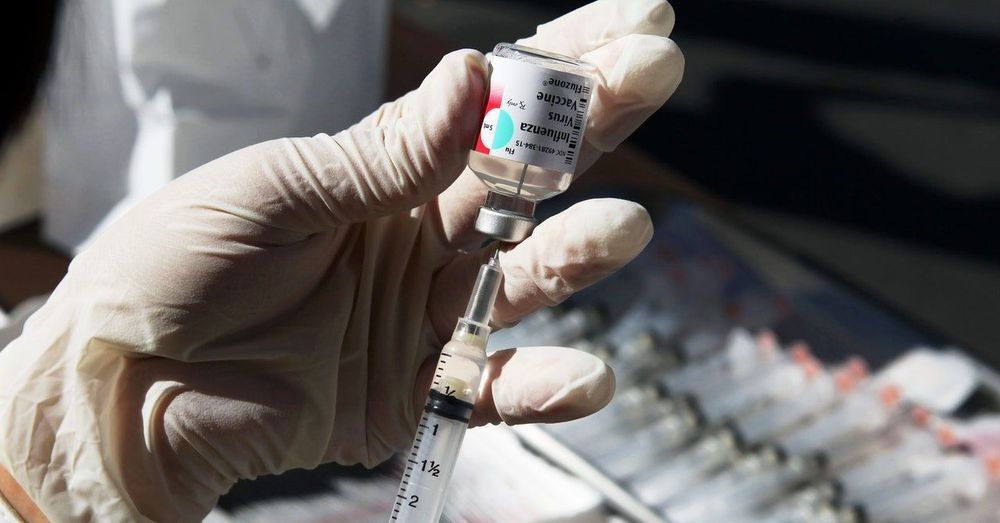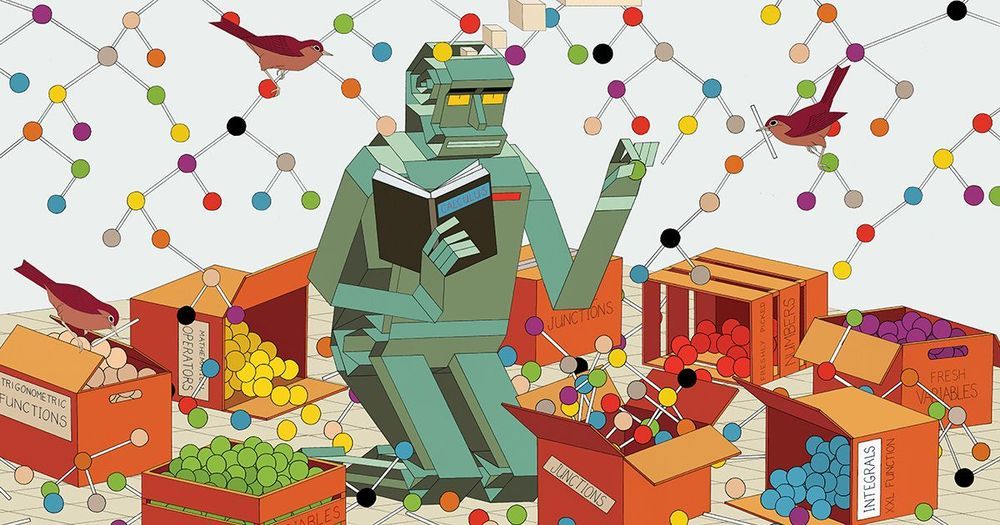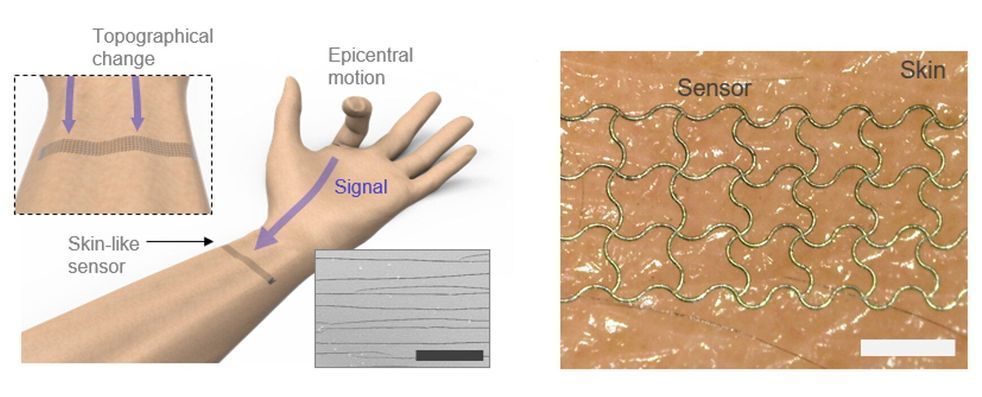Simulators that can rapidly test trillions of options would accelerate the slow and costly process of human clinical trials.



Circa 2019
The OBSBOT Tail is an AI camera that has the ability to track and record a subject without you having to do anything. A self-tracking camera can be used for a wide variety of applications. It’s important to note that the unit I am reviewing is not the shipping version, but a lot of the features are still working. The OBSBOT Tail is expected to start shipping in April.
OBSBOT Tail
![]()

Researchers at Seoul National University and Korea Advanced Institute of Science and Technology (KAIST) have recently developed a sensor that can act as an electronic skin and integrated it with a deep neural network. This deep learning-enhanced e-skin system, presented in a paper published in Nature Communications, can capture human dynamic motions, such as rapid finger movements, from a distance.
The new system stems from an interdisciplinary collaboration that involves experts in the fields of mechanical engineering and computer science. The two researchers who led the recent study are Seung Hwan Ko, a professor of mechanical engineering at Soul National University and Sungho Jo, a computing professor at KAIST.
For several years, Prof. Ko had been trying to develop highly sensitive strain sensors by generating cracks in metal nanoparticle films using laser technology. The resulting sensor arrays were then applied to a virtual reality (VR) glove designed to detect the movements of people’s fingers.
Microsoft announced Tuesday that it has built the fifth most powerful computer on Earth.
Packed with 285,000 processor cores and 10,000 GPUs, the supercomputer was built in collaboration with San Francisco-based artificial intelligence research organization OpenAI. Microsoft announced its partnership with OpenAI last year and contributed $1 billion to the project.
The computer will operate as part of Microsoft’s Azure cloud computing system. The technology giant expects to achieve significantly better results from a single massive supercomputer system than from large numbers of smaller, isolated models.
Buckling, the sudden loss of structural stability, is usually the stuff of engineering nightmares. Mechanical buckling means catastrophic failure for every structural system from rockets to soufflés. It’s what caused the Deepwater Horizon oil spill in 2010, among numerous other disasters.
But, as anyone who has ever played with a toy popper knows, buckling also releases a lot of energy. When the structure of a popper buckles, the energy released by the instability sends the toy flying through the air. Now, researchers from the Harvard John A. Paulson School of Engineering and Applied Sciences (SEAS) and Harvard’s Wyss Institute for Biologically Inspired Engineering have harnessed that energy and used buckling to their advantage to build a fast-moving, inflatable soft actuator.
The research is published in Science Robotics.
Here’s one we missed from several months ago: Brazilian eVTOL innovator EmbraerX put forth a fun video showing how a multi-mode 3D transport system might work, with an eVTOL air taxi carrying a detachable glassed-over cabin that it delivers straight onto a self-driving car chassis.
The coming new breed of eVTOL air taxis are nearly all, at this stage, designed to work as part of a multi-mode transport scheme. The flying taxis themselves will travel from skyport to skyport, meaning you’ll need other means to get yourself to the takeoff point and something else again at the other end for the last mile. It’s simply not practical to expect eVTOLs to drop you off right at your destination.
Companies like Uber are salivating at the thought of being able to offer the whole service as a single sale, co-ordinating a car at each end to minimize travel time, but that starts looking like a bit of an annoyance when you consider the hope is that people will use these things for the daily commute. Four taxis and two eVTOLs every day is a pain.

Roam Robotics is making robotic exoskeletons that are lightweight and affordable so that they can become a new category of consumer electronics. Traditional robotic exoskeletons can weigh between 30 to 60 pounds because they rely on high precision mechanical systems. They are big and bulky and cost as much as a luxury car, which significantly limits their usefulness and availability. Roam’s new robotic exoskeletons are so portable and inexpensive that they could quickly become a commonplace part of modern life.
The pandemic COVID-19 has spread to all over the world and greatly threatens safety and health of people. COVID-19 is highly infectious and with high mortality rate. As no effective antiviral treatment is currently available, new drugs are urgently needed. We employed transcriptional analysis to uncover potential antiviral drugs from natural products or FDA approved drugs. We found liquiritin significantly inhibit replication of SARS-CoV-2 in Vero E6 cells with EC50 = 2.39 μM. Mechanistically, we found liquiritin exerts anti-viral function by mimicking type I interferon. Upregulated genes induced by liquiritin are enriched in GO categories including type I interferon signaling pathway, negative regulation of viral genome replication and etc. In toxicity experiment, no death was observed when treated at dose of 300 mg/kg for a week in ICR mice. All the organ indexes but liver and serum biochemical indexes were normal after treatment. Liquiritin is abundant in licorice tablet (~0.2% by mass), a traditional Chinese medicine. Together, we recommend liquiritin as a competitive candidate for treating COVID-19. We also expect liquiritin to have a broad and potent antiviral function to other viral pathogens, like HBV, HIV and etc.
The authors have declared no competing interest.

It’s 2020. Why can’t we binge Netflix as our cars drive us down the highway? Well, we’ve made progress, but not at the pace once promised. While some cars offer automated driving modes, you’re not to take your eyes off the road or hands from the wheel. Volvo wants to remedy that.
The company isn’t promising 100% self-driving cars in the near future. Instead, they’ll make mainstream cars that reliably drive themselves on highways—totally autonomously, no human attention needed. For a brand built on safety, and in light of autopilot accidents in recent years, it’s notable the company thinks that’s possible in the not-too-distant future.
To make it happen, Volvo said this week that it would begin adding lidar to production cars in 2022. They’ll also develop self-driving software to integrate lidar, cameras, radar, and back-up vehicle control systems. Once the software, dubbed Highway Pilot, is deemed safe, it’ll be sent out as an update to customers who opt in.